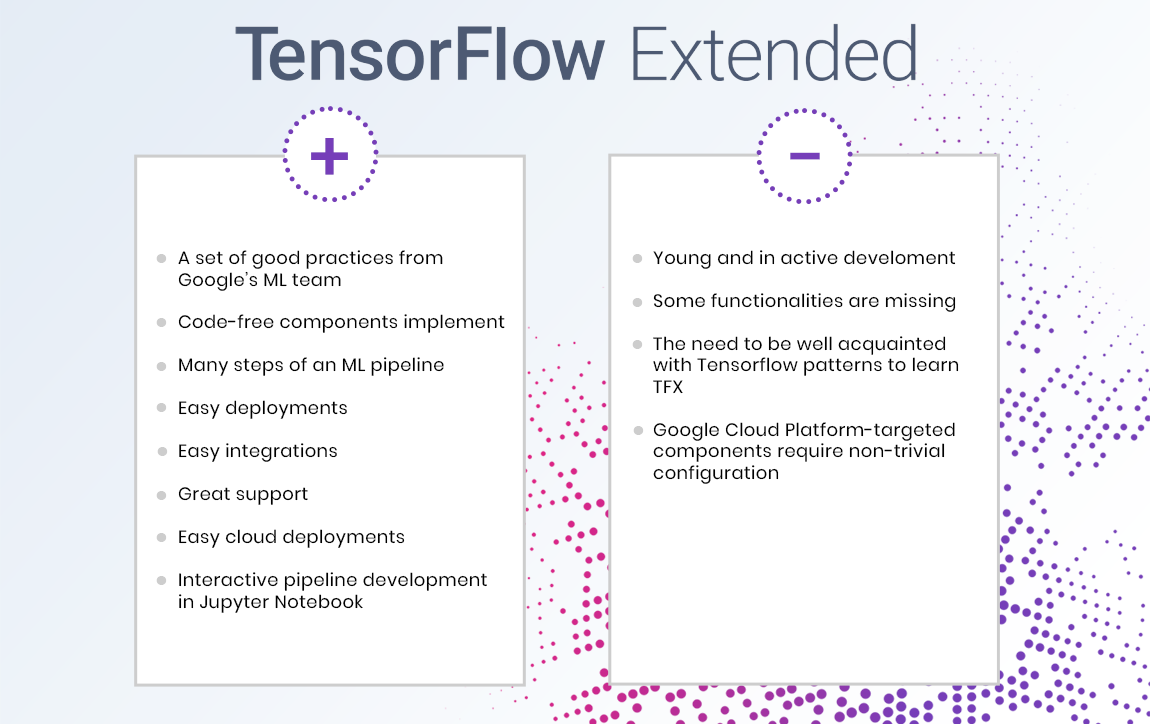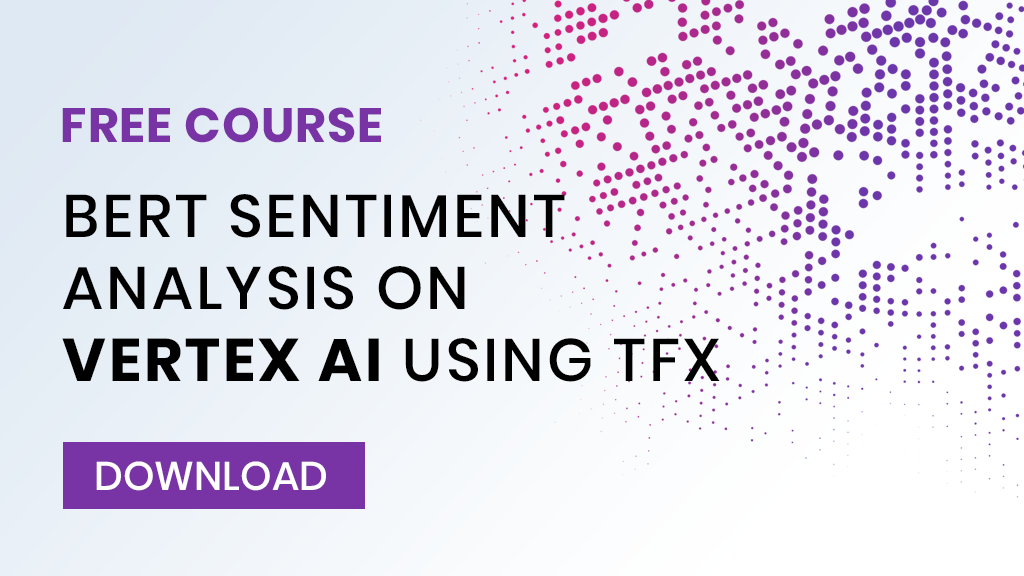Sentiment analysis offers significant business benefits, which is why more and more companies are implementing it.
If you’re wondering how you can run sentiment analysis using TensorFlow Extended, we have something for you. We’ve created a free step-by-step walkthrough on how to apply BERT to sentiment analysis using TFX and Vertex AI pipelines.
But before we check out the course details, let’s look at TFX.
TFX — an underrated Google tool
What do you know about TensorFlow Extended (TFX)? The tool offers a well-structured set of Google’s best MLOps practices.
It also comes with a set of Google Cloud Platform-targeted components, which are like drop-in replacements for standard TFX components that enable users to leverage the distributed training and serving capabilities of GCP.
You can use the library to create Machine Learning pipelines in a clear, declarative way. And the main advantage of the setup is that, for the most part, there’s no code to write to get a pipeline going (except, of course, the feature engineering and modeling code).
But we recently discovered there are only a handful of online tutorials about TFX, while it seems the framework isn’t as widely adopted as it deserves to be.
That’s why we created our free course.
A step-by-step tutorial for running sentiment analysis with TFX
We could see the potential of the TFX platform from the outset, but we decided to modify it, running practical research into how to apply the tool to Machine Learning in production. To do this, we decided to pick:
- Sentiment analysis as the problem
- BERT as the solution
- TFX as the tool
- Vertex AI as the runtime
We chose sentiment analysis as it’s a classic, easy-to-understand Machine Learning problem with a wide range of applications, especially in the retail industry. Similarly, BERT is a widely recognized NLP model that’s also used in retail.
In contrast, Vertex AI (a Google Cloud Platform service) was only recently introduced and is still in the adoption phase — while TFX (Google’s MLOps framework) doesn’t yet have as wide adoption as it deserves.
Given we were researching a relatively unknown area, we felt a course would be the most effective way to present the results.
In essence, the step-by-step walkthrough shows you how to:
- Create a sentiment analysis ML model using ready-made components (BERT)
- Create an end-to-end MLOps pipeline for training, evaluating, and deploying the model using TFX
- Deploy the pipeline to Vertex AI Pipelines
- Preview the key pipeline artifacts
The course also includes open-source code for the entire pipeline and helper library, ready for you to use as templates in your own project. Sound interesting?
Read the course online or download the free PDF by clicking here.







